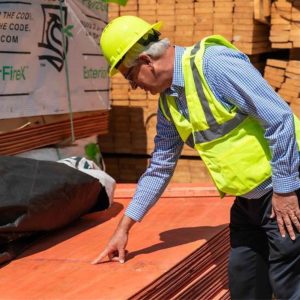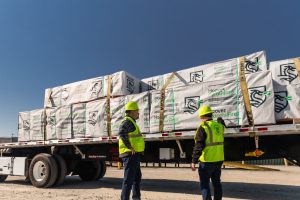The job of a building code official carries more than its share of accountability. On the one hand, code officials are responsible for the life safety of the occupants of the buildings they inspect. On the other, they face the interests of community leaders, developers, architects, builders, general contractors, building material suppliers, and various other stakeholders looking to advance the building project and the investment it represents.
New materials. New assemblies. New construction processes. Design innovations. Evolving code. It is a lot for code enforcement professionals to keep in mind. Few understand these challenges better than Thomas Meyers, an accomplished building official here and abroad, code consultant, and former ICC-IRC committee leader and past member of multiple product evaluation committees. Today Meyers runs Building Intuition, a Colorado-based building code consultancy.
Heroic Enforcement
To Meyers, code enforcement officials represent a very special breed of hero. They serve as the trusted front line on ensuring public safety while guiding orderly progress in the built environment. As Meyers says, “… they have to make very critical and reasoned judgments. It’s not an easy job.”
Take, for example, a building material like fire-retardant-treated wood (FRTW), an increasingly popular component of wall assemblies for Type III building construction.
For building inspectors, the challenge arises when a contractor substitutes a painted or coated product for the code-prescribed impregnated FRTW. These fire retardant paints and coatings are “… always problematic because the coating is a very vulnerable surface,” Meyers says. Material loading and unloading, jobsite storage, abrasions caused by material placement and installation, and fastener penetrations can damage the coating and compromise fire performance of the product.
Due Diligence
Yet some fire retardant paints and coatings have evaluation documentation that may look credible when the product is listed by an evaluation agency. The evaluation agency may state that the product can be used in lieu of pressure-treated FRTW. That leaves it up to the code official to accept the report based on his or her belief in the credibility and competency of the evaluation agency. In short, it becomes a judgment call.
Meyers recommends caution in those situations. “I always advise a code official to do their homework. Due diligence involves critically reviewing the evaluation agency’s process. They should always understand how a product is being evaluated,” asserts Meyers.
If that testing and listing process isn’t transparent or is difficult to determine, you risk making an uninformed decision. “You don’t understand what took place and can’t be certain that the evaluation actually proved code intent or not. If there’s a problem, you know who’s ultimately responsible and that is usually the code official” he says.
Understand the Source
“The evaluation process today is very fluid. Don’t rely on past assumptions of performance,” advises Meyers. “Code officials should periodically review how evaluation agencies operate before accepting a product strictly based on the evaluator’s reputation.” Verify that the testing, listing, and evaluation agencies have the proper ANSI and IAS accreditations for the categories of products being listed and evaluated.
Underwriters Laboratories (UL) in Northbrook, IL is an example of a testing and listing agency that is accredited by both ANSI and IAS for testing and certifying the fire performance of products like FRTW through both listing and evaluation reports.
UL Evaluation Reports benefit from wide industry acceptance, according to a survey of code professionals attending the 2013 ICC Expo. Eighty-seven percent of the professionals polled said they were familiar with the UL Evaluation Reports and all code officials surveyed – 100 percent – said they would accept the Reports for safe, code compliant installations.
Evaluation Example
Pressure impregnated fire-retardant-treated wood manufacturers have utilized the testing and listing services of Underwriters Laboratories in Northbrook, IL for many years. In fact, UL developed the tests that have been utilized by the insurance industry for listing FRTW in the 1930s. In the early 1960’s these tests and the insurance requirements for listing FRTW were promulgated in the model building codes.
This past April, Hoover Treated Wood Products became the first manufacturer to obtain an UL Evaluation Report for FRTW. UL Evaluation Report ER7002-01 for Pyro-Guard® Fire-Retardant-Treated Wood presents a comprehensive view of the material, verifying compliance with code mandated requirements.
The Report carefully describes its testing methodologies. UL evaluators, for example, tested not only Pyro-Guard® surface burning characteristics in accordance with ANSI/UL 723 (ASTM E84), but they also scrutinized all other code mandated performance criteria for FRTW including mechanical properties, hygroscopicity and corrosivity.
Hoover’s pressure-impregnated FRTW products do not require an evaluation report to “meet the letter of the code,” Meyers says. “Hoover isn’t obligated to obtain an evaluation report for their product because their pressure-impregnated manufacturing process is codified (2015 IBC Section 2303.2, testing in accordance with ASTM E84 or UL723). To go beyond that with an UL Evaluation Report is an added level of product assurance for the code official’s peace of mind,” offers Meyers.
Fail-Safe Compliance
Meyers appreciates the UL’s attention to detail, the hallmark of code enforcement. “What I like about the Reports are the references and hyperlinks to the manufacturer’s listings and fire-rated assemblies. It’s helpful to have an evaluation report that indicates the acceptance of that material and then its applications, plus links that help connect it all together,” Meyers reports.
Summary
As code officials review building materials and assemblies, it makes sense to pay attention to an often overlooked component of the review process: the source of the evaluation report that supports their decision-making.
In the view of industry experts like Thomas Meyers, code officials are well-advised to periodically ‘evaluate the evaluator’ for their quality, transparency, and methodology.
Disclaimer: The views and opinions expressed in this article are those of Hoover Treated Wood Products and do not necessarily reflect those of the International Code Council, or Hanley Wood.



